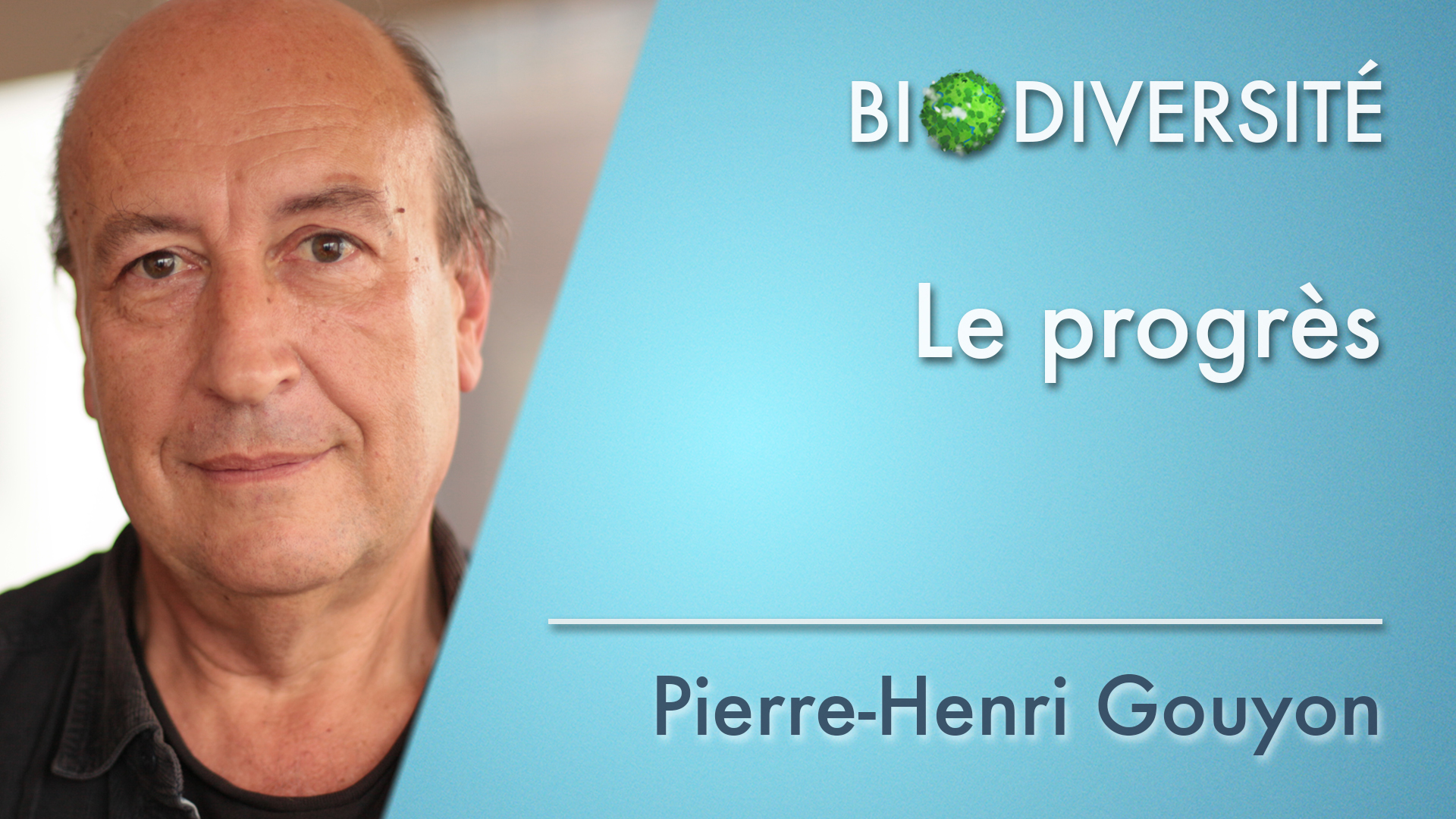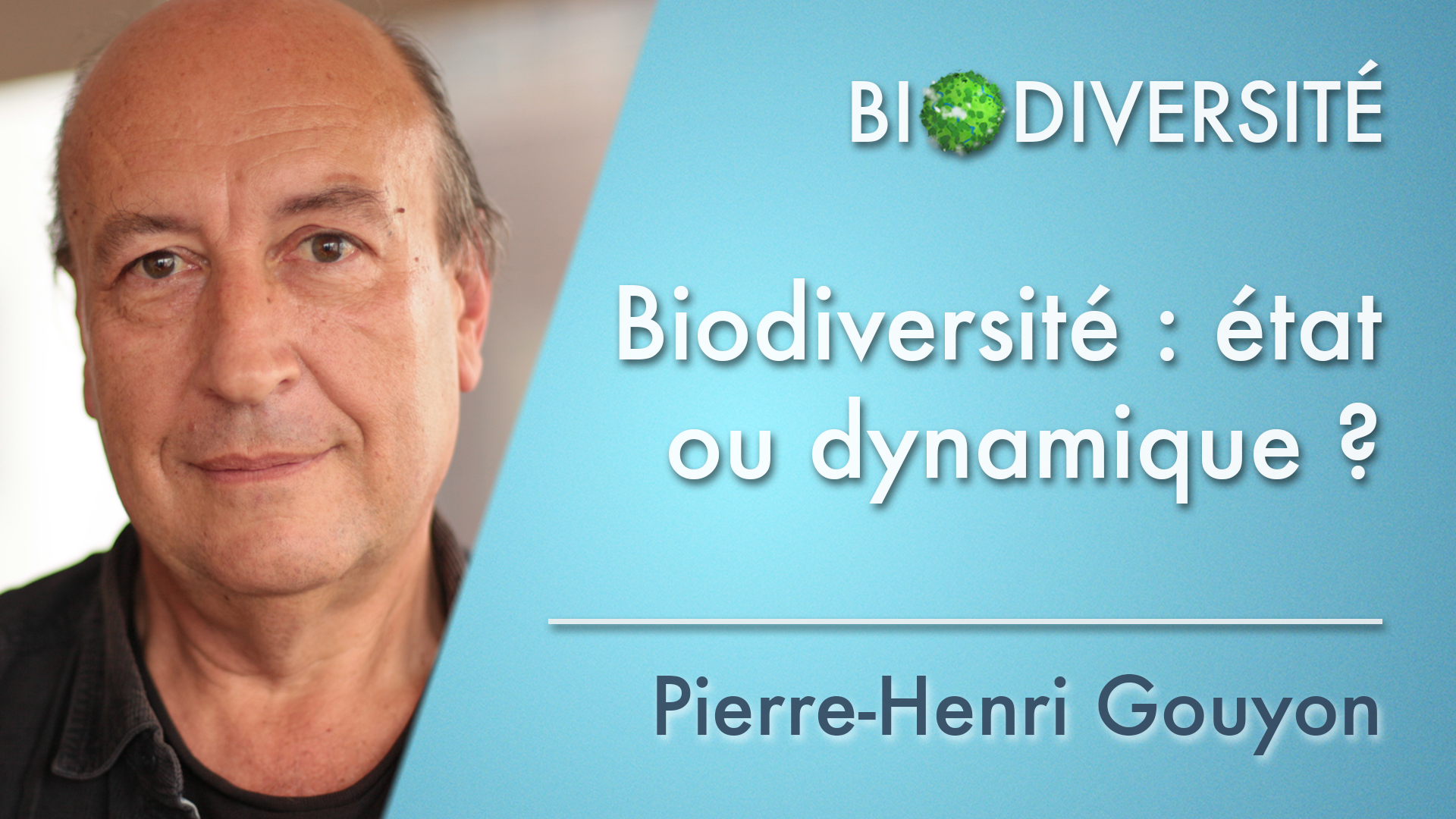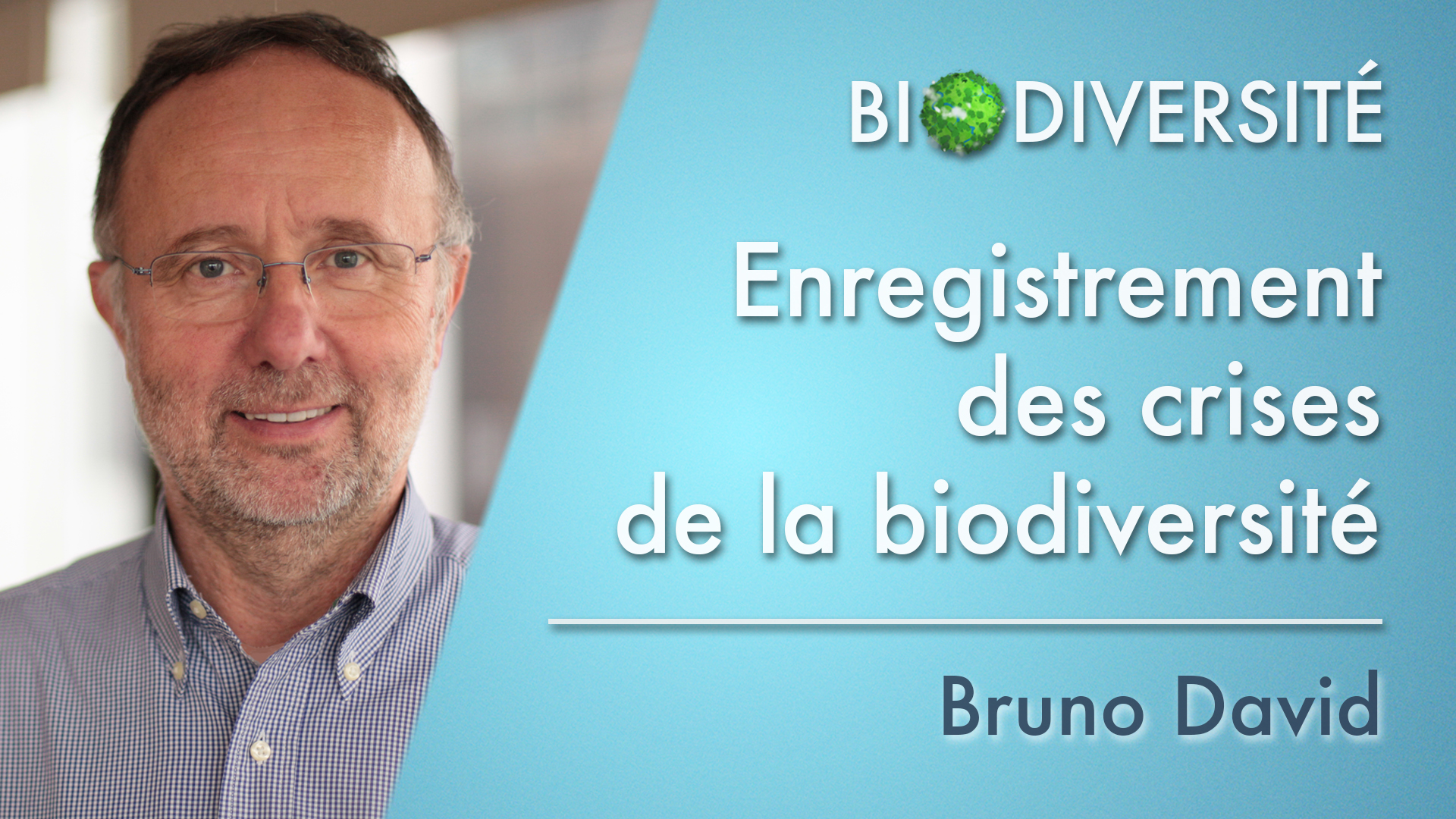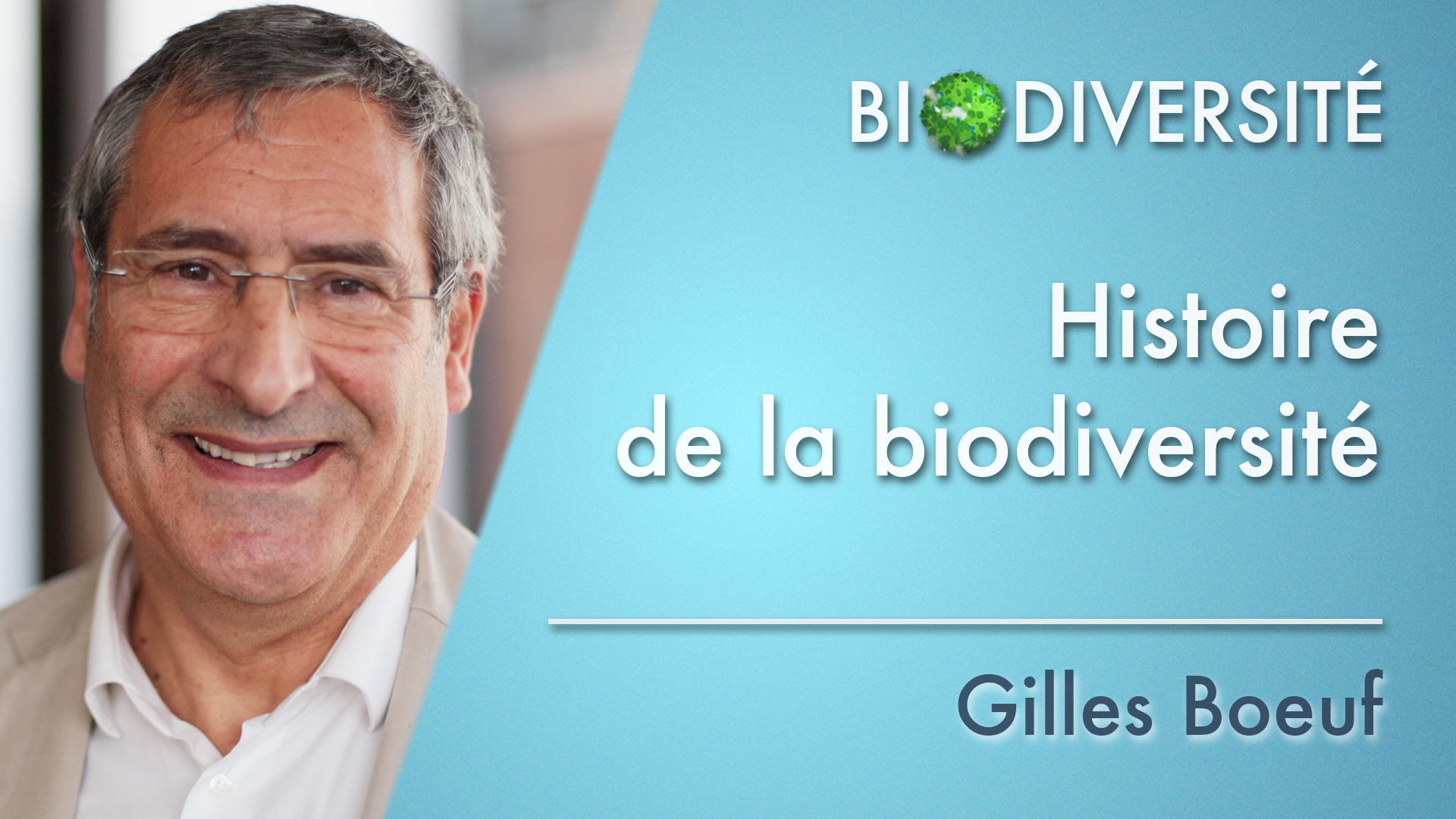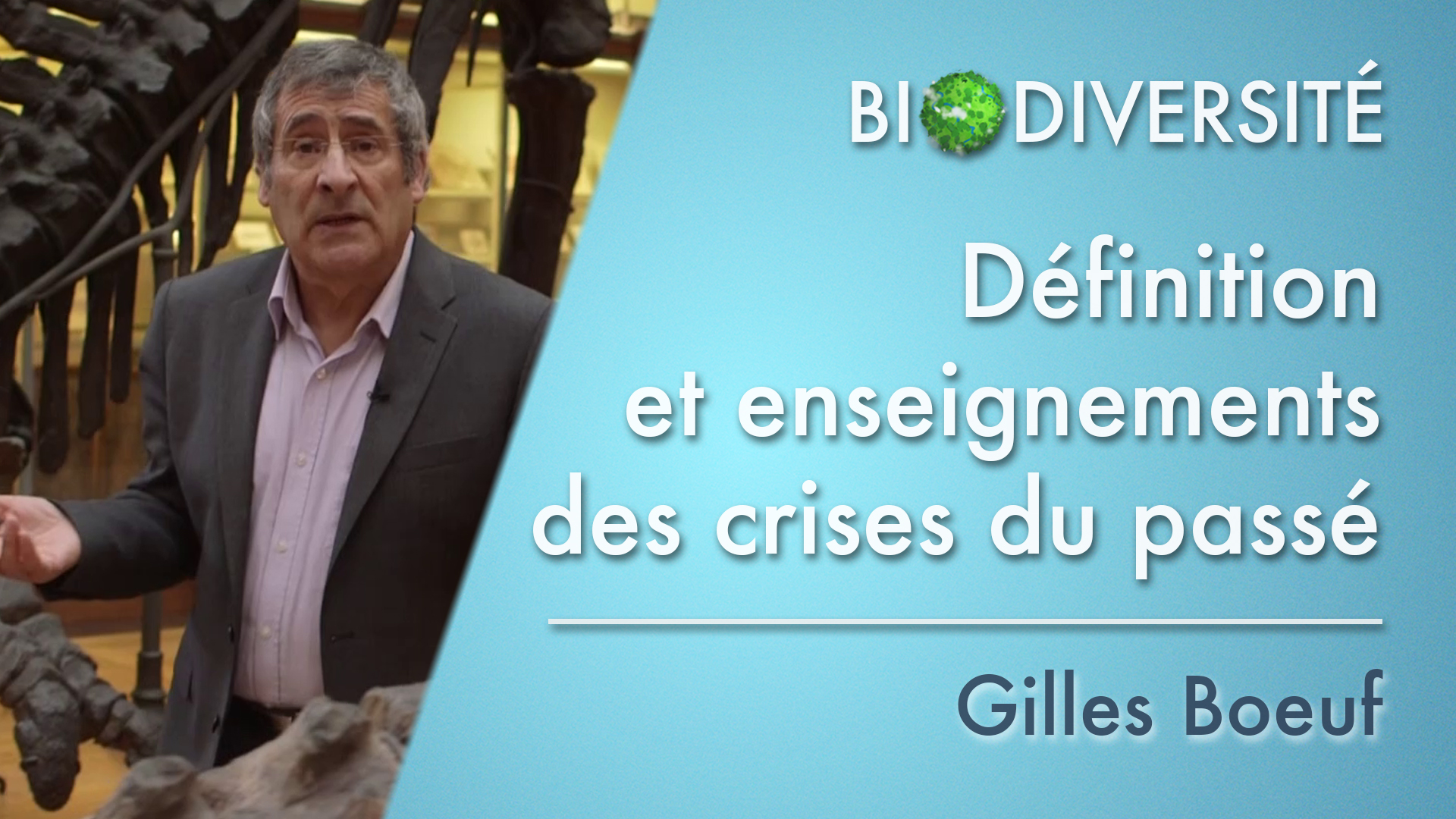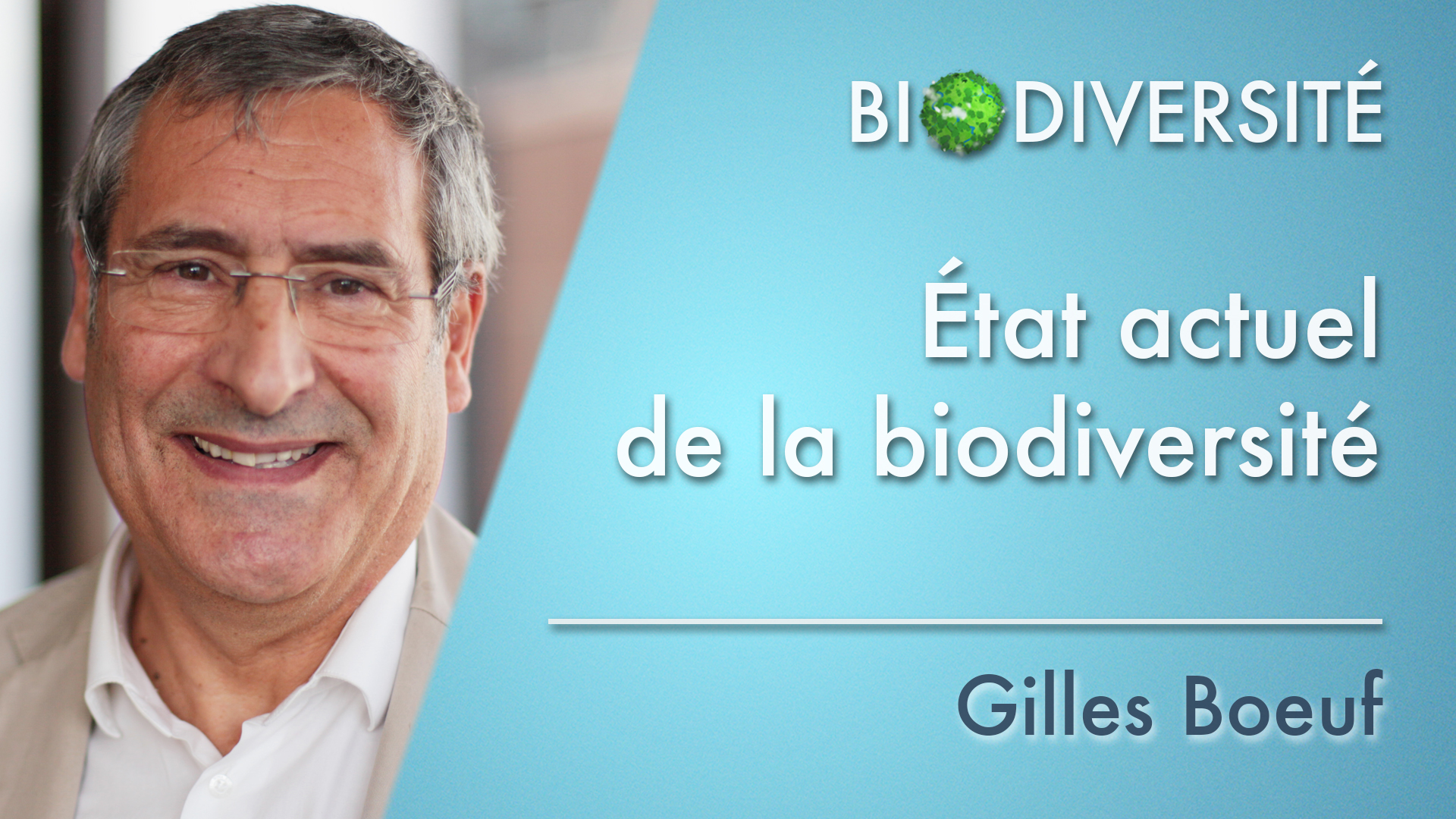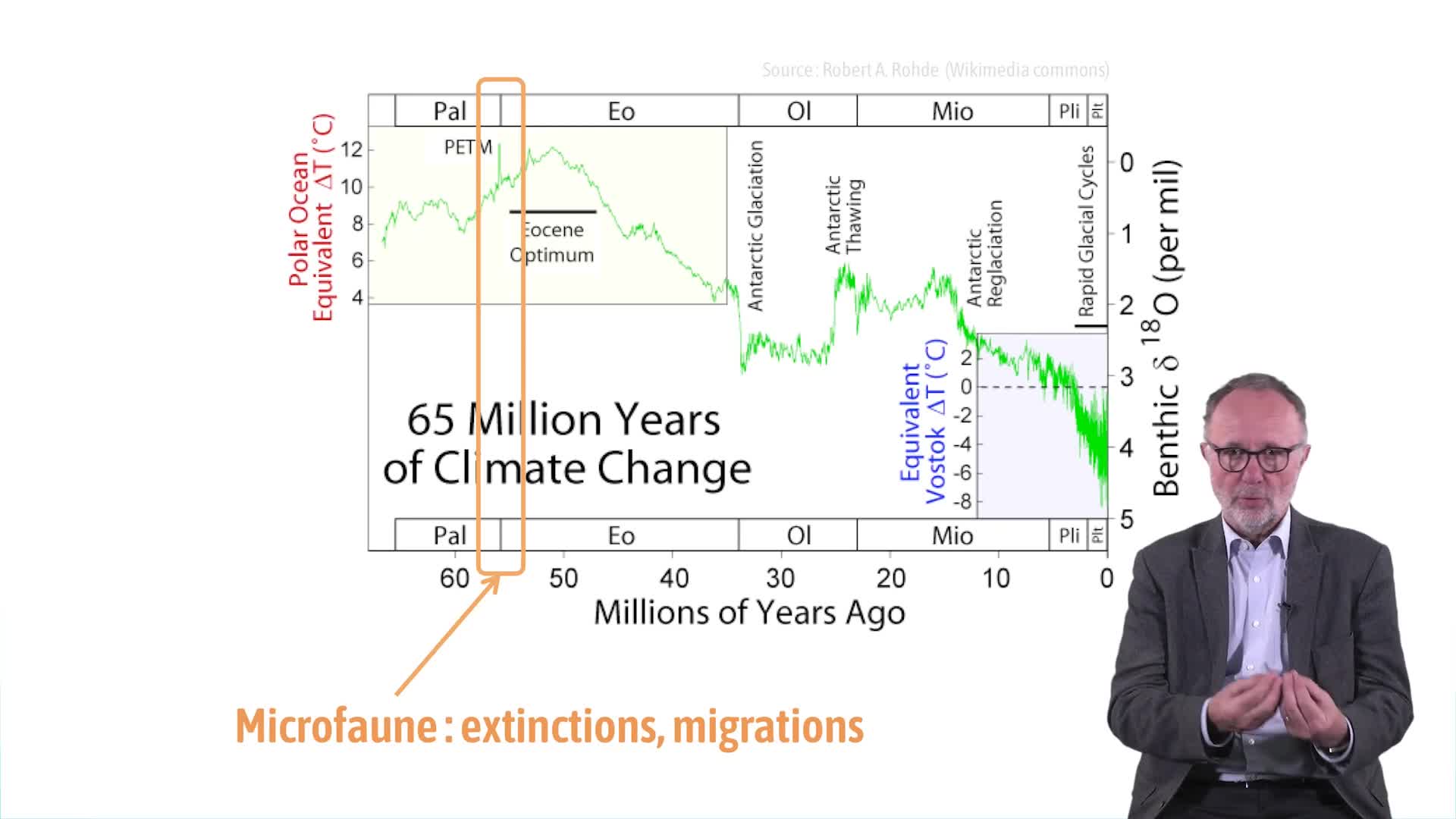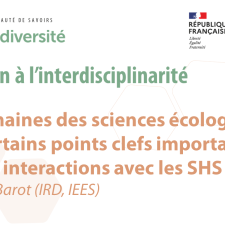Notice
6. Les grandes crises de la biodiversité
- document 1 document 2 document 3
- niveau 1 niveau 2 niveau 3
Descriptif
Bruno David revient sur les grandes crises d'extinction de la biodiversité. Il en fait l'inventaire depuis plusieurs centaines de millions d'années et il discute des facteurs qui peuvent en être à l'origine : oxygénation du milieu marin, climat, volcanisme, ou encore météorites. Pour finir, il évoque la situation actuelle et le risque d'une sixième crise d'extinction de la biodiversité.
Dans la même collection
-
EN-11. Nature and progress
GouyonPierre-HenriPierre-Henri Gouyon relies on an example - Dedale - to show the effects and the risks of a progress understanding which is only based on the technology.
-
EN-2. Biodiversity: state or dynamics ?
GouyonPierre-HenriPierre-Henri Gouyon proposes a definition of the biodiversity. He relies on the diagram that Darwin published in 1859, in The Origin of Species. He insists on the dynamic balances of this biodiversity
-
EN-1. Definition of biodiversity
BoeufGillesGilles Boeuf proposes a definition of the biodiversity, this "living fraction of the nature in all its complexity". He relies on many examples, pictures, samples, and always points out the strong
-
EN-9. Biodiversity: perception and uses
GouyonPierre-HenriPierre-Henri Gouyon comes back to different looks taken at nature and biodiversity during the last centuries. He insists on the fact that this biodiversity can't be reduced to a frozen group of
-
EN-4. Origins of life
MaurelMarie-ChristineMarie-Christine Maurel comes back to the formation of the first living cells on the earth surface, relying on several great experiments. The she presents the extent of questionings which still remain,
-
EN-7. Records of the biodiversity crisis
DavidBrunoBruno David comes back to the main biodiversity crisis. He focuses on 2 aspects : the crisis recording and the exit from the crisis. Firstly, he explains that, contrary to what can be supposed, there
-
EN-10. Why should we worry about biodiversity ?
BoeufGillesIn relation to the erosion of biodiversity, Gilles Boeuf presents arguments in favor of the upholding of this biodiversity: human health, technology innovation, bio-inspiration, or economy.
-
EN-5. The history of biodiversity
BoeufGillesGilles Boeuf comes back to the main stages of the history of life. He begins with the oceans, where life appeared over 3,5 billion years ago, mentions the lands conquest, and ends with the appearance
-
Definition and lesson learned from the past crisis
BoeufGillesIn this first part, discover what are the biodiversity, its origins 3,8 billion years ago, and its evolution mechanisms, especially the extinction crisis of the main species. You will better
-
EN-8. Current state of the planet and of the biodiversity
BoeufGillesGilles Boeuf reports the erosion of biodiversity and presents the four main factors which can be associated to this dynamics: destruction and pollution, resources overexploitation, species
-
EN-3. Origins of life: the context
MaurelMarie-ChristineMarie-Christine Maurel explores the origins of life on earth. She highlights the main conditions 3 billion years ago, as well as the emergence of the first forms of life, which gave birth to the tree
-
EN-6. The main crisis of biodiversity
DavidBrunoBruno David comes back to the main biodiversity crisis. He takes an inventory of the crisis for hundreds of million years and he discusses their potential factors of origin : oxygenation of the marine
Avec les mêmes intervenants et intervenantes
-
L'océan : un terrain connu ?
DavidBrunoBruno David, ancien Président du Muséum national d'Histoire naturelle, discute dans cette vidéo de l'état de nos connaissances par rapport à l'océan.
-
EN-7. Records of the biodiversity crisis
DavidBrunoBruno David comes back to the main biodiversity crisis. He focuses on 2 aspects : the crisis recording and the exit from the crisis. Firstly, he explains that, contrary to what can be supposed, there
-
EN-6. The main crisis of biodiversity
DavidBrunoBruno David comes back to the main biodiversity crisis. He takes an inventory of the crisis for hundreds of million years and he discusses their potential factors of origin : oxygenation of the marine
-
7. Enregistrement des crises de la biodiversité
DavidBrunoBruno David revient sur les grandes crises d'extinction de la biodiversité. Il se focalise sur deux aspects : d'une part l'enregistrement de ces crises en montrant que contrairement à ce que l'on peut
Sur le même thème
-
Présentation des domaines des sciences écologiques et de certains points clefs importants pour les …
BarotSébastienDans cette séance, Sébastien Barot propose une introduction aux grands domaines des sciences écologiques et à leurs fondements épistémologiques et méthodologiques.
-
Évolution des forêts tropicales humides : des processus globaux à la conservation locale transdisci…
CouvreurThomas L.P.Thomas Couvreur présente des travaux de recherche sur les forêts tropicales humides, leur biodiversité au niveau global et les projets de conversation en Equateur
-
Tresser les filets fantômes. Une anthropologie des déchets marins : entre visible et invisible
Le RouxGéraldineBourgeois CostaHenriVidardMathieuSixième rencontre du cycle Océans : héritage commun, défis partagés, qui s'est tenue le 14 octobre 2025, avec Géraldine Le Roux, Henri Bourgeois Costa et Mathieu Vidard au Forum de la FMSH
-
Présentation du GBIF - Global Biodiversity Information Facility - Système Mondial d’Information sur…
ArchambeauAnne-SophieAnne-Sophie Archambeau, Node manager GBIF France, présente le Système Mondial d’Information sur la Biodiversité, programme intergouvernemental et infrastructure de données, créé en 2001, pour
-
Adapter les villes à un climat qui se réchauffe
MigliariMatteoComment adapter les villes face à un climat qui se réchauffe pour garantir leur vivabilité ? C'est la question centrale que s'est posée Matteo Migliari durant ses années de thèse, réalisée entre le
-
Le sauvage dans les aires marines protégées
BricaultPaulineBoemareCatherineLachowskyCarolineQuatrième rencontre du cycle Océans : héritage commun, défis partagés, qui s'est tenue le 17 juin 2025, avec Pauline Bricault, Catherine Boemare et Caroline Lachowsky, au Forum de la FMSH
-
Secret de paysages
CarrièreStéphanieGeninDidierLaquesAnne-ÉlisabethCette vidéo présente une analyse des paysages malgaches. Elle a été réalisée dans le cadre du projet Varuna Science de la Durabilité par des scientifiques malgaches et français, tous membres du
-
Les valeurs de la biodiversité
BlancoJulienPaquetSarahIssu du projet Varuna Science de la Durabilité (Financement AFD et maitrise d'ouvrage Expertise France) développé par l'UMR SENS et ses partenaires malgaches, cette vidéo a été réalisée par Julien
-
Meteorite impacts and their consequences for life
DrabonNadjaLes Rencontres Exobiologiques pour Doctorants (RED) sont une école de formation sur les « bases de l'astrobiologie ». L’édition 2025 s’est tenue du 16 au 21 mars au Parc Ornithologique du Teich.
-
Changement climatique, fonte des glaces, réchauffement et hausse de l'océan : le rôle de l'observat…
CazenaveAnnyIl est à présent bien établi que les activités humaines sont la cause du changement climatique observé de nos jours. L'apport de l'observation spatiale, à l'aide de satellites en orbite autour de la
-
Évaluations socio-économiques et environnementales : justifient-elles les grands projets d’aménagem…
LevrelHaroldLa valorisation monétaire attribuable à la biodiversité et la pertinence ou non des outils socio-économiques et environnementaux peuvent mener à des situations de contentieux, comme le cas de l'A69.
-
Enjeux et priorités pour la COP 30 Climat à Belem : apport de l'IRD - Cosavez-vous ? Climat Science…
La COSAV Climat Sciences Société organise ce séminaire pour explorer les enjeux cruciaux de la prochaine COP 30, qui se tiendra à Belém en novembre prochain, ainsi que les contributions des recherches


